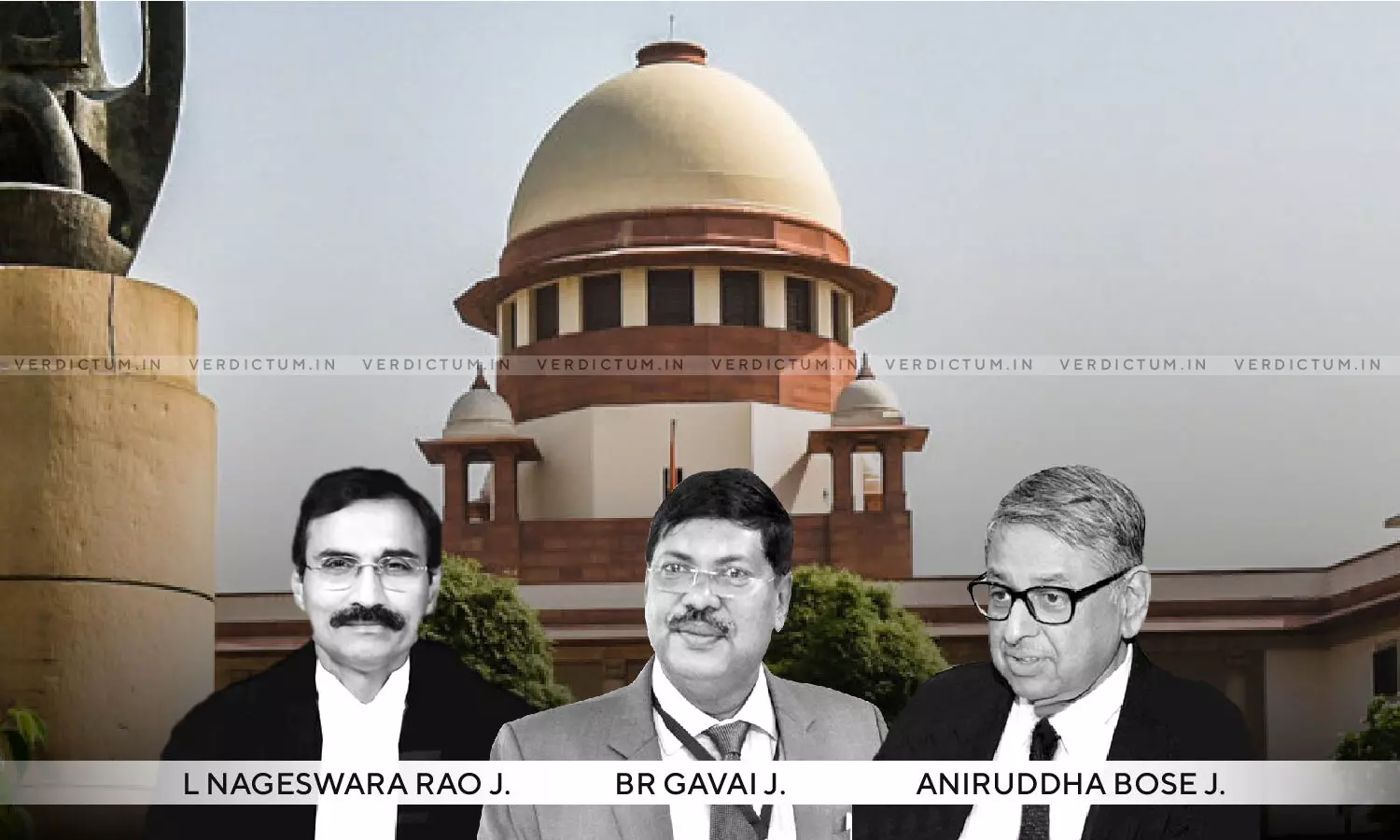
Protected Forests: Minimum Width Of One Kilometre ESZ Ought To Be Maintained – Directs Supreme Court
 |
|A Supreme Court Bench of Justice L Nageswara Rao, Justice BR Gavai and Justice Aniruddha Bose has passed a slew of directions in its June 3 Judgment and has ordered that every protected forest must have an ESZ of one kilometre. The Court also banned mining activities in such areas.
The applications arose from a report of the Central Empowered Committee (CEC) dated 20th November 2003, which specifically pertained to the Jamua Ramgarh wildlife sanctuary. The report gives a horrific picture of the ravaging of a protected forest mainly by private miners mostly with temporary working permits obtained from the Governmental agencies. On 20th September 2013, a second report was submitted by the CEC and the recommendations made in the second report went beyond the Jamua Ramgarh Sanctuary and dealt with the creation of identification and declaration of safety zones around protected forests all across the country.
The first set of issues related to mining activities in and around a wildlife sanctuary in the State of Rajasthan is known as Jamua Ramgarh. The second set of issues involved prescribing ecosensitive zones (ESZ) surrounding the wildlife sanctuaries and national parks.
The Court stressed the role of the State while opining that "The role of the State cannot be confined to that of a facilitator or generator of economic activities for immediate upliftment of the fortunes of the State. The State also has to act as a trustee for the benefit of the general public in relation to the natural resources so that sustainable development can be achieved in the long term. Such role of the State is more relevant today, than, possibly, at any point of time in history with the threat of climate catastrophe resulting from global warming looming large."
Dealing with the question of impleadment of firms and individuals who had some kind of permission for carrying on mining activities in Jamua Ramgarh sanctuary, the Court relied on the judgment in Vellore Citizens' Welfare Forum v. Union of India, where the Court had held that the Precautionary Principle is an essential feature of the principle of Sustainable Development and held that the same principles will continue to be followed.
With regard to the issue involving the ESZs, the Court ordered that a minimum width of one kilometre ESZ ought to be maintained in respect of the protected forests, which would be the standard formula, subject to changes in special circumstances.
The Court also ordered that for commencing any new permissible activity, the ESZ norm of one kilometre shall be maintained for Jamua Ramgarh sanctuary.
The Bench passed a slew of directions, where it ordered that each protected forest must have an ESZ of a minimum of one kilometre measured from the demarcated boundary of the protected forest and for the Jamua Ramgarh wildlife sanctuary, it shall be 500 metres so far as subsisting activities are concerned.
Further, it was ordered that in the event the ESZ is already prescribed as per law that goes beyond a one-kilometre buffer zone, the wider margin as ESZ shall prevail. If such a wider buffer zone beyond one kilometre is proposed under any statutory instrument, then the ESZ covering the area beyond one kilometre as proposed shall be maintained until the final decision is taken.
The Court also directed that mining within the national parks and wildlife sanctuaries shall not be permitted.
It was opined that the minimum width of the ESZ may be diluted in the overwhelming public interest, but only after the due legal procedure is followed and the order is passed by the Court.
With regard to rampant illegal mining activities within the Jamua Ramgarh sanctuary, the Court said that "The CEC shall quantify the compensation to be recovered from each miner indulging in mining activities within the Jamua Ramgarh sanctuary in violation of any statutory provision or order of this Court. Specific recommendations for compensatory afforestation, reclamation, clearing overburden dumping as also compensation in monetary units for degradation of forest resources shall also be made."
The Court also requested the Chief Justice of India to consider a joint hearing of the present Writ Petition, i.e., Re: T.N. Godavarman Thirumulpad v. Union of India & Ors and Goa Foundation v. Union of India, owing to certain overlapping issues between the two Petitions.
Click here to read/download the Judgment